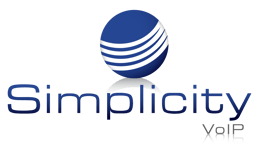Top 6 Call Tracking Metrics
Inbound calls are the best source of leads over any other channel. They are the source of the highest conversion rates. If you manage or market for a business that operates on inbound phone calls, then you’re in luck!
However, it’s no secret that the competition is fierce nowadays, no matter the business. This is why you must take full advantage of each interaction with your customers and gain as much information about your customers and prospects as possible.
Call tracking metrics can help with this. With call tracking metrics, you'll be able to have a complete overview of which articles, links, advertisements, and so on are piquing the interest of your audience. With this information on hand, you can focus your spending efforts on what is proven to work. You will have all of the necessary information to ensure each lead is a qualified one.

If you already have a system to track calls, you may be aware of the benefits of understanding each of your leads and the opportunities it presents. Below, we will focus on which metrics you should utilize to transform your calls and campaigns and optimize marketing and managing strategies.
Top Call Metrics to Track
Below are some of the top metrics your business should be focusing on once you choose to implement a call tracking system:
#1. Call Volume
With these metrics, you will have a broader oversight as to which ads are driving calls. You will have access to detailed reports, call patterns, and caller behaviors.
Businesses rely on inbound and outbound calls to keep operations running. It is important to monitor calls regularly. One particularly good aspect of call tracking is that it can regularly record the call quality; there is no need to track any inbound calls manually. Your calls will be tracked and sorted based on patterns like an hour, day, week, month, year, and others if you choose.
#2. First-time Callers
This metric shows you which callers connect with your business for the first time. This is a critical and beneficial metric that business leaders should pay close attention to. This KPI also highlights which of your company’s marketing strategies bring these new callers to your business.
#3. Call Duration
Unfortunately, not every call is as valuable as the next. Some calls are likely to churn out better leads than another. Typically, the longer the call, the more likely it will turn into a quality lead or a loyal customer. After all, why would a prospect spend an ample amount of time connecting with a member of your team if they were not interested in your product or service or failed to receive excellent customer service? Call tracking metrics can provide companies with the length of each call, which allows you to assess which campaigns, keywords, landing pages, ads, and more are generating longer, more meaningful conversations.
It is good to establish a minimum call-length threshold with your call center representatives. Determine a time frame that qualifies a call as a lead or prospective lead. Additionally, while some calls taken are from an actual human being, they sometimes turn out to be telemarketing calls that found you through an online search and are not true leads. Be cognizant.
To help filter out spam or illegitimate calls, determine a realistic call length minimum as the threshold a call must reach before it’s verified as a “true” lead. This call could be as short as 30 seconds and as long as five minutes; it differs from business to business and your sales processes.
#4. Geographical Location and Local Time
While Pay-per-Click (PPC)campaigns allow you to manage or change bids by the time of day and geographical location, call tracking metrics can determine what time of day and what locations account for the largest percentage of conversions. You can utilize this data to adjust your bids appropriately, allowing you to reap every opportunity and advantage of your PPC dollars.
When you know which calls are converting, you will be able to adjust bids based on the different types of calls and the quality of calls received from various locations, days, and times.
For instance, if the calls you receive on Wednesday afternoons are most often non-converters, you could bid down during that time frame. Furthermore, you can apply the same rationale to the geographic locations where your ads are showing: If you know a specific metro area accounts for greater phone leads, you can increase your bids for that area.
#5. Landing Page and PPC Performance
Prospective customers generally have two options when visiting the PPC landing pages: They can either fill out a contact form or call the company directly. Without call tracking metrics in place, you will only be able to gather information about the number of forms filled out. In many occurrences, this could make it seem as though your PPC conversion rate is dramatically lower than it actually is. Now you can tie in phone calls and gain a better grasp of your landing page performance.
For example, it would be simple to assume that a landing page without any forms for visitors to fill out is pointless and a failure, but this is not the case when call tracking ties in. Call tracking information can reveal that landing pages direct many customers to contact the company further, deliver high-quality leads, and account for conversions via phone calls. However, when analyzing landing pages, be sure to look at the data from multiple angles, ask the right questions regarding page performance, and make sure you know which landing pages are:
- Directing the most calls
- Producing the most significant number of calls with highly qualified leads
- Generating the most clients or customers
- Yielding the best call conversion rate
#6. Conversions
Quite possibly the most vital metric of all conversion. These offer a 360 view of all marketing strategies and campaigns and can tell you which one worked and why. These metrics include keywords, ads, match types, and also landing pages.
Inbound calls can take relatively no time at all or as long as a couple of months to finally secure a paying customer. Be sure you are capturing which interaction worked and turned a prospect into a client and how long it took. With this data, you will have an even better understanding of your sales cycle and what is working and what is not.
Another comparison to make within these metrics is phone leads vs web leads and the conversions of each. Analyze both from start to finish and determine which is producing the most profits, churning out the most leads, and more. Knowing this will help you adjust your phone and web strategies.
Simplicity offers call center solutions that can increase functionality, productivity, and efficiency and can fit the needs of any size business.
Learn more about why VoIP is a leading technology for contact centers and check out all of the elite call center features Simplicity can provide for your business!



%20(1).jpg?width=352&name=arlington-research-kN_kViDchA0-unsplash%20(2)%20(1).jpg)
